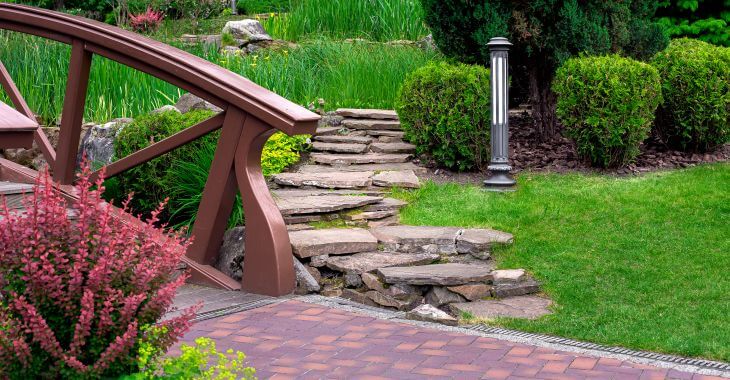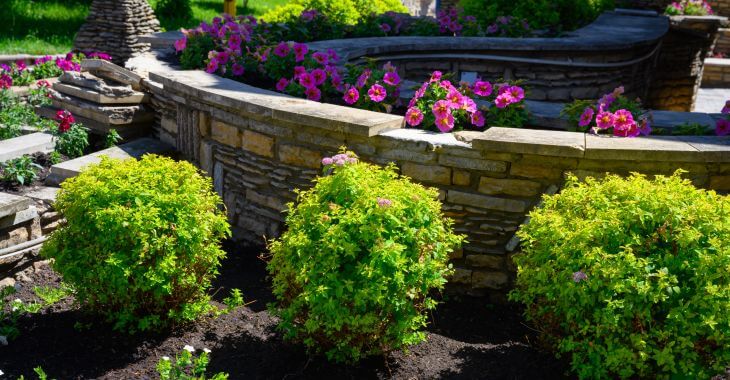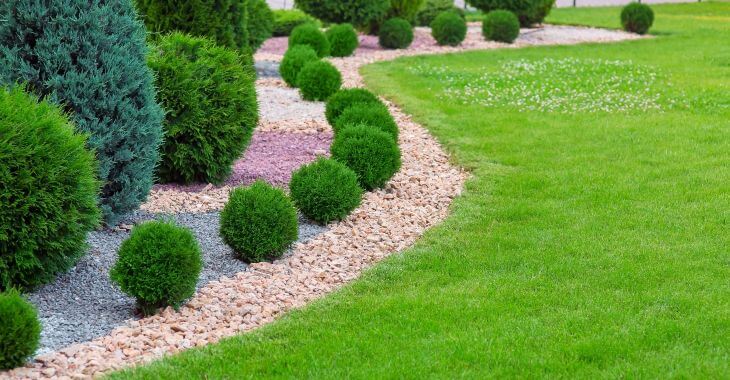The Most Effective Drainage and Erosion Solutions

Do you have soggy spots in your yard or a mudslide occurring on a slope? Water can cause significant damage to your property if it is not drained properly. The most effective drainage and erosion solutions divert water to desired areas to protect your landscaping, home, and property from water damage.
If water is allowed to flow wherever it desires, it can wreak havoc on your property. Poorly draining roofs and water pooling in your yard can erode away dirt and cause extensive harm. Some of the results of poor drainage include:
- Water leaking into your basement or around the foundation
- Sinking foundations
- Eroded plants and grass on slopes and hills
- Mudslides
- Stagnant water that attracts insects
- Damage to sidewalks, driveways, and other paved surfaces
- Ruined landscaping
- Mold and mildew damage inside your home
The goal with drainage and erosion control is to divert the water to a place where it will not harm your property. This can be a storm drain, retention pond, or other drainage area designated to hold water run-off safely and effectively.
Best Options for Drainage and Erosion Control
There are different ways to control drainage to reduce erosion and other issues. The system you use to control drainage issues will depend on the layout of your property and where you need water to flow. The following are a few possible drainage and erosion solutions.
French Drains
French drains are perforated pipes that are installed underground to divert water away from structures, landscaping, and other protected areas. These pipes are laid into trenches that are lined with drainage rock, then covered with soil or turf.
As water seeps down through the soil, it flows through holes in the pipes, which diverts it to the desired area. French drains can be used in conjunction with gutter systems and other drainage devices to deliver the water to the correct location.
Grading
Grading your property can help diminish drainage issues, especially if you have leaks into a basement or pooling water in your yard. Soil should be the highest around your home, then slope at low grade to divert water away from the foundation, dispersing it through the yard.
When grading is performed, it creates a natural diversion for water flowing off your roof or down through your gutters. The slight slope encourages water to flow away from your home. The grading process also levels your yard to eliminate low spots where water can collect.
One way to make the most of the water flowing away from your house is with strategically-placed landscaping beds. Gardens and landscape beds filled with shrubs and plants can utilize the water and help manage drainage issues.
Dry Creek Beds
When water has a convenient place to go, it will naturally flow in that direction. Along with grading and French drains, dry creek beds offer a functional and aesthetic solution for drainage issues. These are trenches lined with river rock that can be used to collect excess water on your property.
When water levels are high, water can flow into the man-made creek bed and slowly drainage into the soil between the rocks. During the drier months, the dry creek bed is a beautiful landscape feature. The best place to add a dry creek bed is at the lowest level on your property, using gravity as a catalyst. .
Retaining Walls
For erosion control on slopes and hills, a retaining wall is often the best solution. When water flows too fast due to a deep slope or hill, it can rip away foliage and soil. Retaining walls are used to add support to sloped areas and may be used to create useful tiers on hilled property.
Retaining walls can be made from many different types of materials. Stone, brick, wood, and concrete are all common materials that are used to support hillsides and minimize erosion. Retaining walls are complex to build, which is why you may need a professional landscaper for installation.
Who to Call for Drainage Problems in Yard
If you have drainage issues or erosion problems in your yard, the best people to call are landscapers who offer drainage solutions. Professional landscapers who perform hardscaping can inspect your yard and recommend drainage and erosion solutions.

Drainage and erosion problems require expertise to fix. Most solutions are not easy DIY projects – you need to know exactly how to install them for them to work correctly. Landscapers are who to call for drainage problems in yard as they have the knowledge needed to install proper drainage solutions.
Water erosion, leaks, and pooling can make a mess of your property. With the right drainage and erosion solutions, you can protect your home, landscaping, and structures from expensive damage. Call a local landscaper to discuss the right drainage and erosion control for your property.
